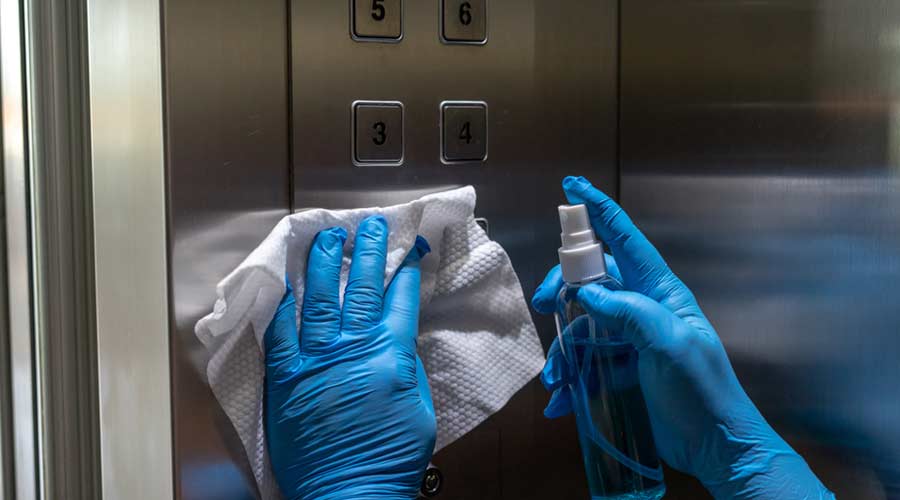
Vaping in schools is an important health crisis that puts students’ health and well-being at risk and causes complex challenges for facilities teams. Vape monitoring alone won’t solve the problem.
E-cigarettes (vapes) have been available on the U.S. market for nearly 20 years. Once introduced, vape usage increased rapidly among teens until it reached a peak of 27.5 percent of high school students in 2019. By 2024, this number had gone down significantly, with 6 percent of middle and high school students (about 1.6 million students) reporting usage. This reduction is attributed to factors including stronger enforcement, flavored tobacco bans, and education about the health warnings associated with vaping.
While the downward trend is encouraging, millions of adolescents are still vaping, and this continues to be a major health concern and a significant challenge for school facilities management.
Among the 1.6 million middle and high school students who report vape usage, 38 percent reported frequent use and 26 percent reported daily use. This frequent and daily vaping in schools impacts students and schools in a number of ways.
First and foremost, vape usage among K-12 students has a negative impact on student health and their ability to learn. Most e-cigarettes contain nicotine, which is highly addictive. Nicotine can harm the areas of an adolescent's brain that control attention, learning, mood, and impulse control. The aerosol used in vapes contains other substances such as cancer-causing chemicals, heavy metals, volatile organic compounds, and tiny particles that can be inhaled deep into the lungs. Vaping is also associated with mental health symptoms, such as depression.
Vaping in schools also impacts the learning experience of nonusers. Increasing irritability and more frequent class disruptions mean less-than-ideal learning conditions for everyone.
In addition to health concerns, vaping in schools is now an issue that custodians, facilities staff, teachers, and administrators face daily, including those who are Healthy Green Schools & Colleges Program participants.
“The prevalence of vape usage among students has emerged as a pressing concern for our schools, often paralleling or even surpassing other student conduct and health-related challenges,” says Aneta Mistak, Director of Operations for Township District 214 in Arlington Heights, Illinois.
School districts have responded by installing vape monitors to curb vape usage in school buildings. Clark County School District in Las Vegas plans to install vape detectors in all 43 of its high school restrooms after running a pilot program to develop a vaping policy, according to Lori Olson-Arzaga, the district’s Director of Environmental Services.
Salt Lake City School District installed vape detectors across all its secondary schools last year. The addition of monitors can present schools with a new set of challenges and resource needs that existing budgets and staffing levels cannot fully meet. Unfortunately, while the initiative helped address student vaping, it also uncovered different issues.
“In an effort to avoid detection, some students have been flushing vape devices down toilets,” says Ricky Martinez, Assistant Director of Facility Services for the district. “This behavior has led to frequent plumbing blockages, resulting in increased maintenance costs and staff time dedicated to clearing sewer lines. Additionally, the current staffing levels are insufficient to effectively respond to and manage alerts triggered by the vape detectors. This limits our ability to consistently enforce the policy and address incidents in a timely manner, making our investment in vape detectors less effective.”
Monitoring via vape detectors alone is not enough to address vape usage in schools. Students who are found to be vaping often face suspensions and other punishments—an approach that has been criticized as ineffective and punitive. Public health leaders, including the American Lung Association, emphasize that vaping is addictive and requires comprehensive cessation interventions if the goal is to support students to stop vaping.
One long-term challenge associated with managing student vape use is how rapidly the market innovates.
“The e-cigarette market is constantly changing, with new, discrete devices and flavored products being sold and marketed to youth,” shares Mistak. “This makes it difficult for school facilities teams to stay updated on the latest trends and for us to effectively recognize and work to reduce use of these devices.”
Facilities directors and school leaders cannot treat vaping as a passing trend. It is both a facilities issue and, more significantly, a serious health issue. It requires a combination of education and support, technology, policies, and accountability measures to achieve sustained reductions in student vape usage.
Sara Porter has worked with Healthy Schools Campaign for over 15 years. She currently serves as director of Healthy Green Schools & Colleges, a program that helps K-12 and higher education institutions identify and implement low- and no-cost measures that promote healthy environments.

 Celebrating BSCAI's 60th Anniversary eBook
Celebrating BSCAI's 60th Anniversary eBook The Down and Dirty on Cleaning in Virus Season
The Down and Dirty on Cleaning in Virus Season How Surfactant Use is Expanding in Commercial Cleaning
How Surfactant Use is Expanding in Commercial Cleaning